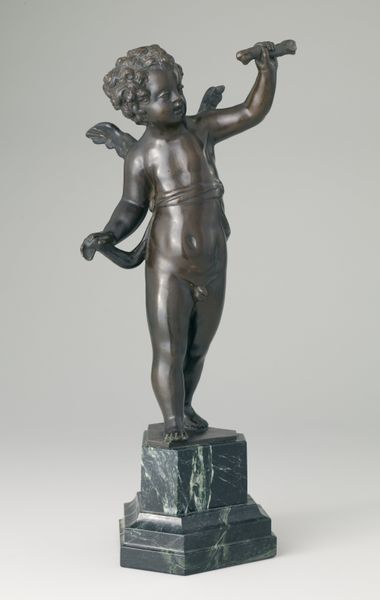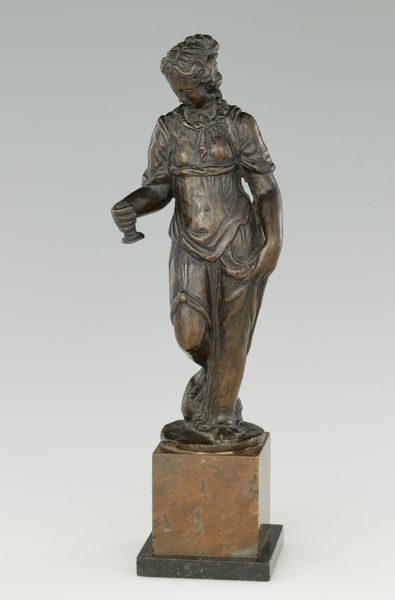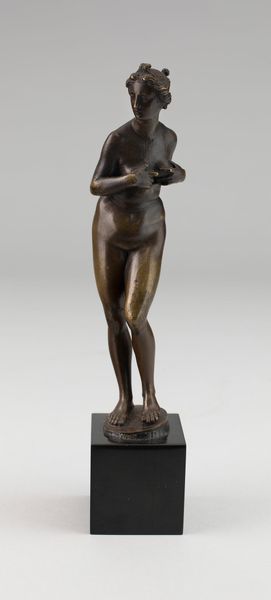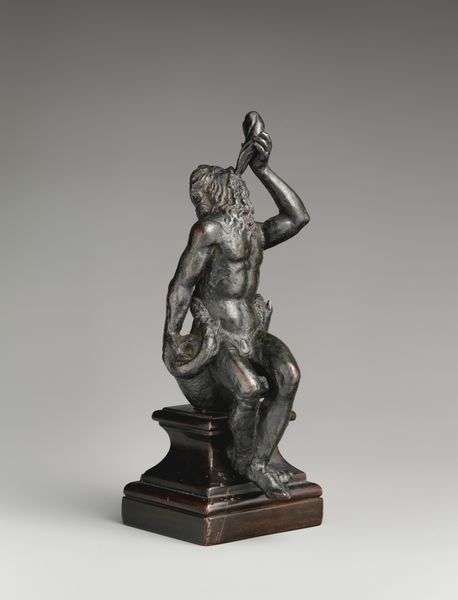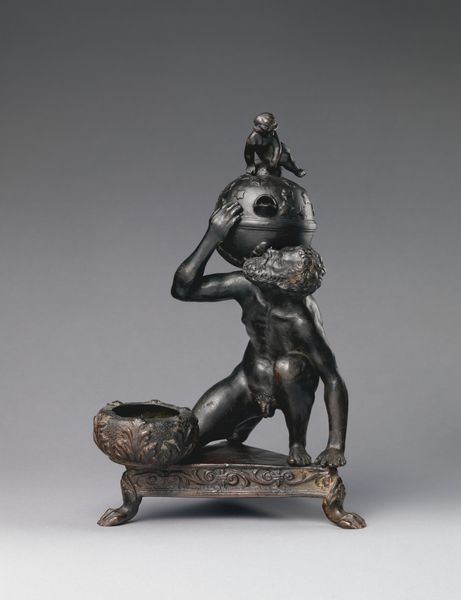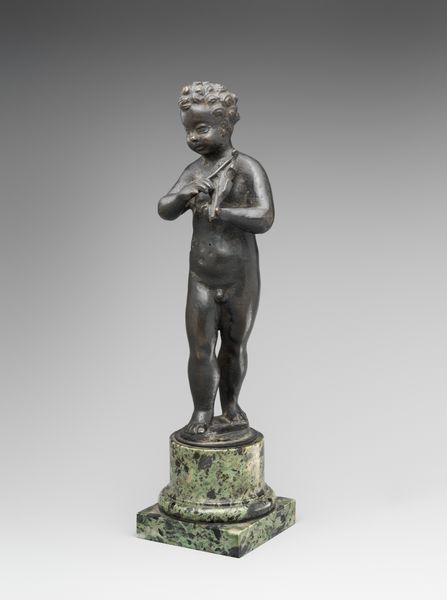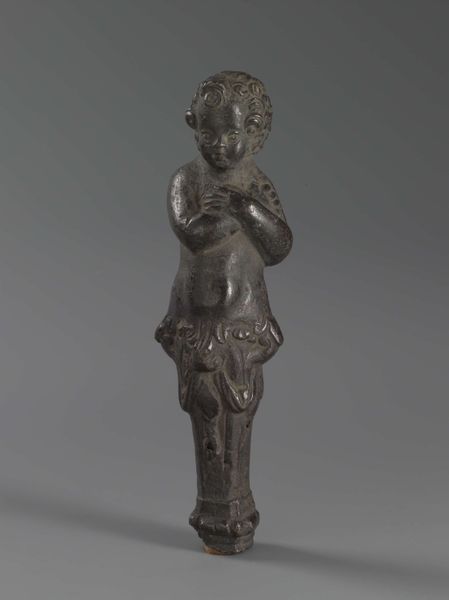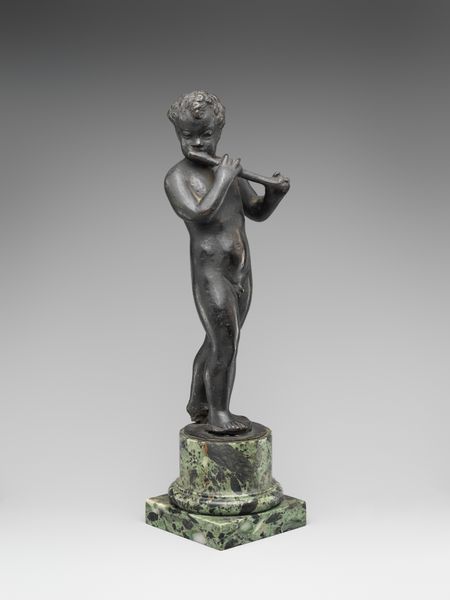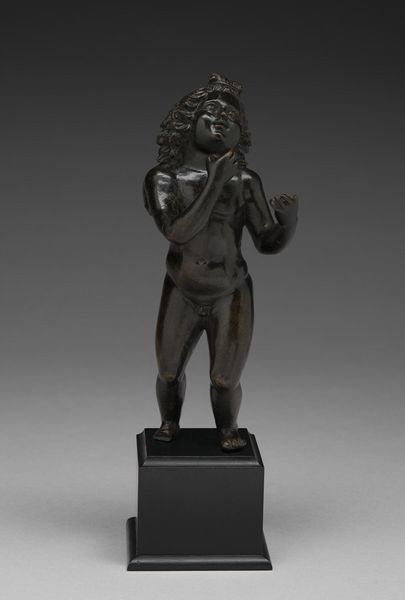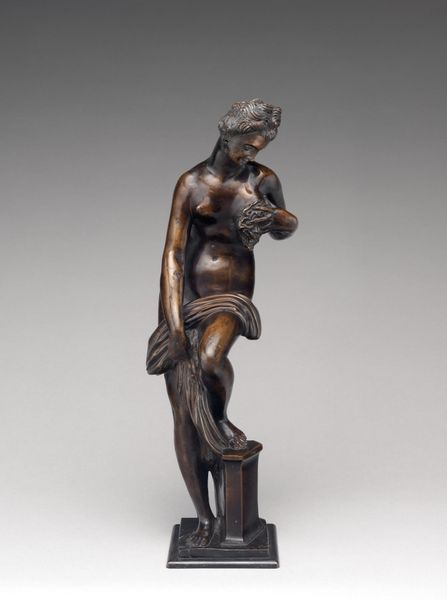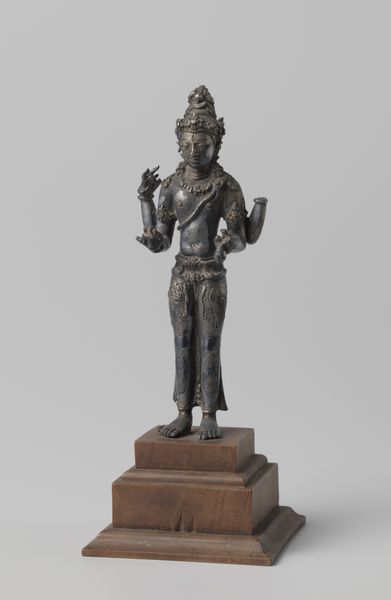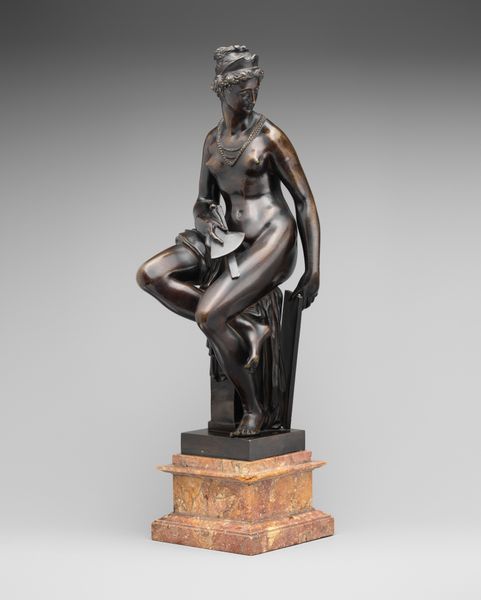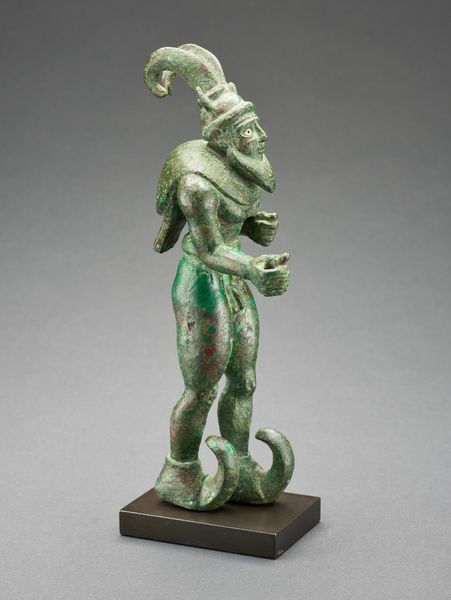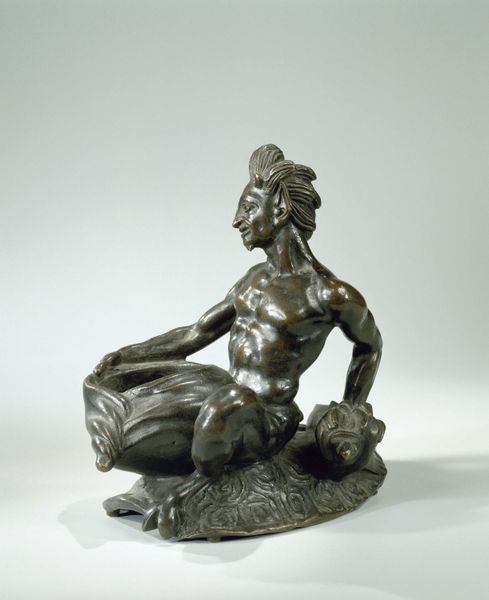
bronze, sculpture
#
portrait
#
medieval
#
sculpture
#
asian-art
#
bronze
#
figuration
#
sculpture
Dimensions: 21 x 9 x 7 1/4 in. (53.34 x 22.86 x 18.42 cm)
Copyright: Public Domain
This bronze sculpture depicts the Child Shaiva Saint Sambandar. His hands are raised in a gesture that speaks across centuries. This is Jnana Mudra, the gesture of knowledge. Notice how the hands, held at chest level, convey the union of the individual soul with the divine through the meeting of the thumb and index finger. This motif echoes in different cultures, from the Buddhist vitarka mudra—the gesture of teaching—to the Christian iconography where the hand is raised in blessing. But consider also the psychoanalytic implications of this gesture: an assertion of self, an expression of authority, and the deep-seated human desire to communicate transcendental knowledge. This emblem is not merely an artistic choice but a powerful force, engaging viewers on a subconscious level. Through history, this symbol has resurfaced, evolved, and taken on new meanings in different historical contexts, evidencing the timeless pursuit of understanding.
Comments
minneapolisinstituteofart almost 2 years ago
⋮
Sambandar was one of 63 saints who lived between the sixth and ninth centuries, and composed hymns extolling Shiva. As models for the devotee, they became holy persons in their own rite. Sambandar was the youngest saint, and he is depicted as a minimally adorned, standing infant, whose right index finger would have pointed upwards. It is said that he was left alone in a temple and began to cry from hunger. In response, the goddess Uma emerged from an image of herself on the temple ceiling and gave him a cup of milk, which is seen in the sculpture's left hand. Overcome with joy, Sambandar began to sing in praise of Shiva and Uma, all the while pointing to her image.
Join the conversation
Join millions of artists and users on Artera today and experience the ultimate creative platform.
